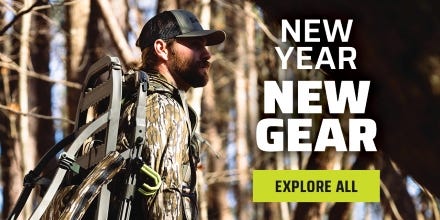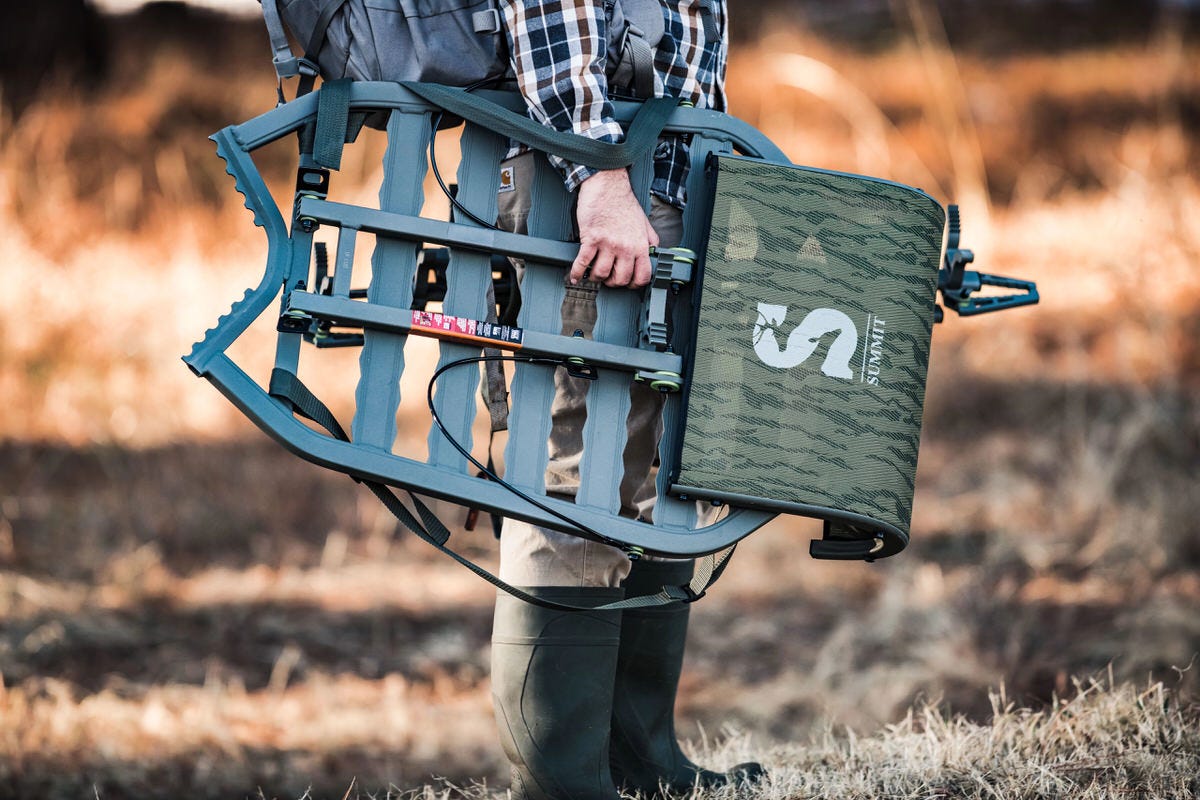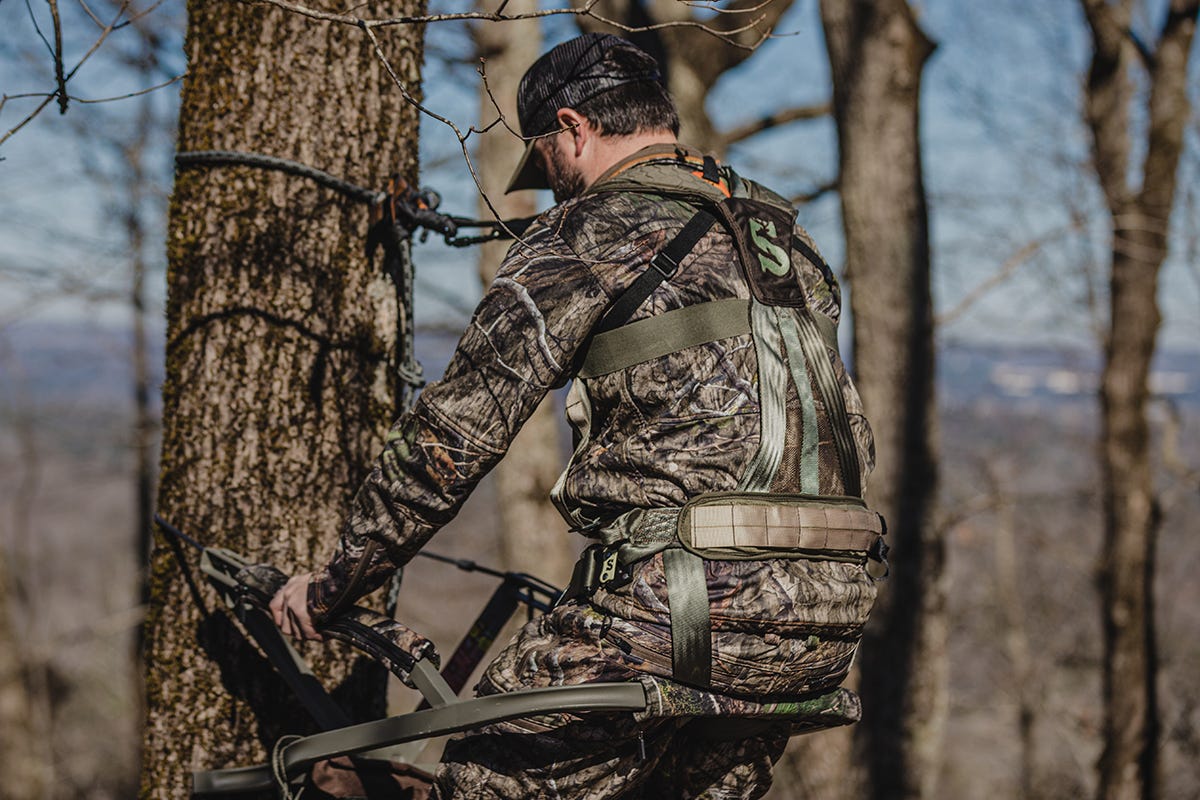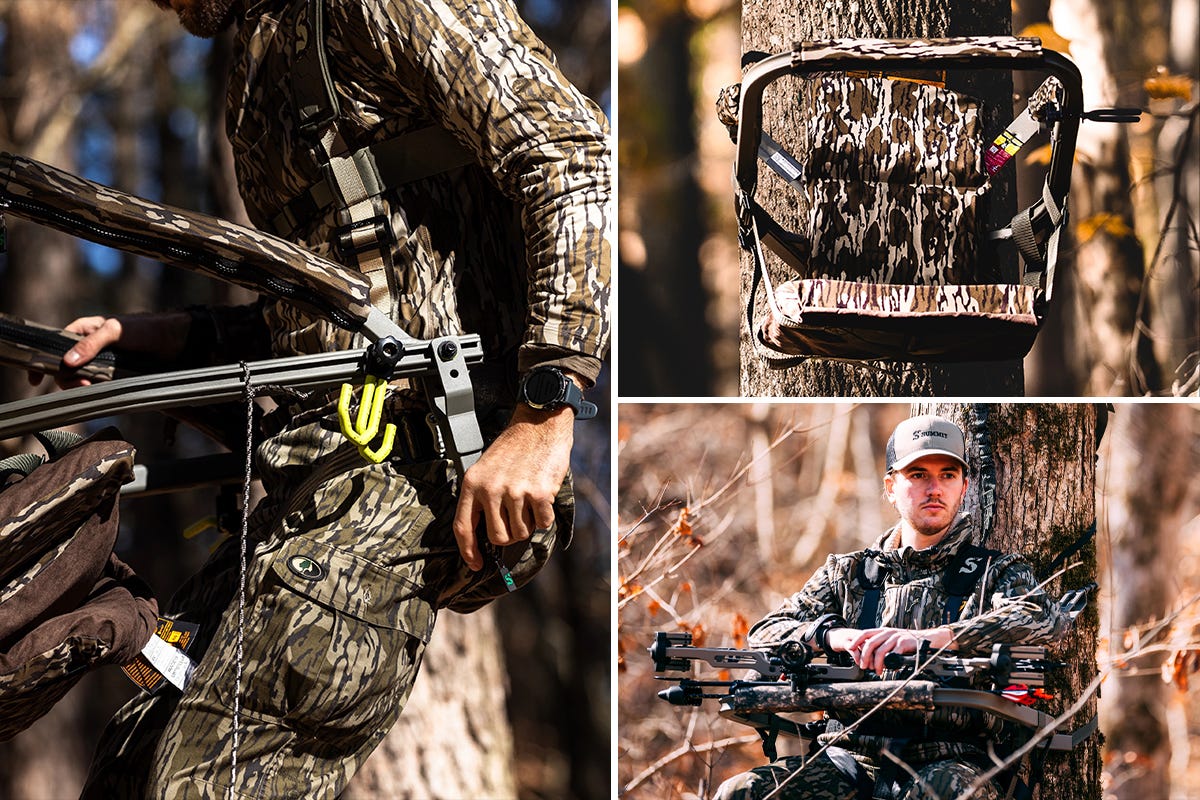- Feb 4, 2020
Ground Blinds for Gobblers
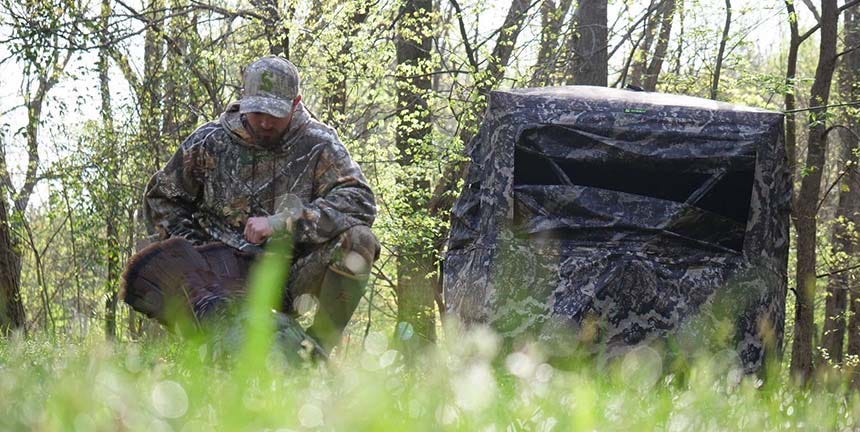
Growing up, my first “real” deer hunting experiences took place in Michigan’s Upper Peninsula during the state’s November rifle season. The U.P. is a cold, harsh land filled with conifer forests, black bears, and a few whitetails.
We always arrived at camp a day or two prior to the opener, and it was tradition to take a walk to check out the “blinds” and ensure all was well. This usually meant stacking a few more pine boughs on the make-shift hides that encircled cheap metal folding chairs. Those blinds offered almost no protection from the elements and did an okay job of hiding us from deer—as long as the deer didn’t raise their gaze more than a couple feet above the ground. I would have paid a hefty sum back then to have one of the excellent ground blinds available today.
Blinds have certainly come a long way since then, and Summit’s new lineup of ground blinds is as good as it gets. With models of varying size, configuration and price, there’s no reason not to have one as part of your spring turkey (and fall deer) arsenal. But when should you use one? And where?
I’ve found myself using ground blinds more and more in recent years and have learned a few things through good, old-fashioned trial and error. Here are four lessons I’ve learned that just might help you this spring.
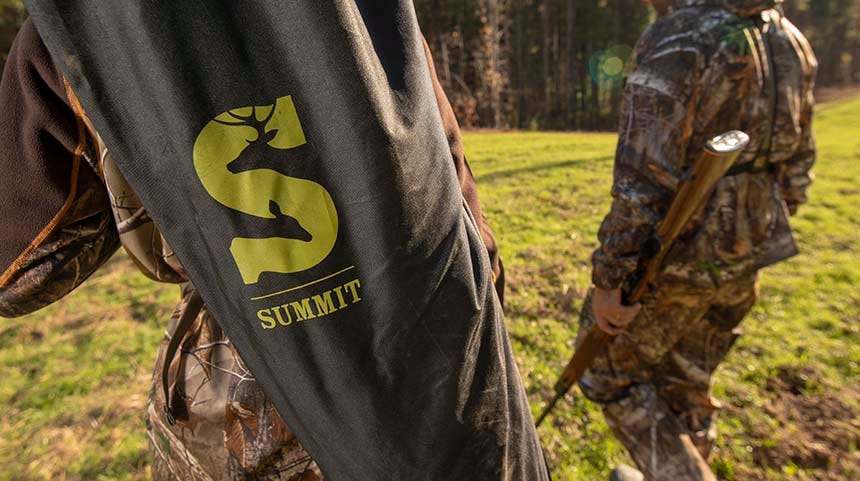
Keep Walking |
I hunt a fair bit of public land each spring, and I can usually tell pretty quickly if I’m sharing an area with an experienced turkey hunter or not, just by looking at ground blind locations.
Inexperienced hunters place blinds in obvious, convenient locations such as field edges or along access paths.
I’m not saying those areas won’t produce any action. I’m sure they can. But a little extra scouting time will likely reveal areas that are less obvious (and less likely to be pressured by other hunters) with an abundance of turkey sign.
I typically employ ground blinds in situations where I’ll need to spend a considerable amount of time in a specific area. This usually means areas where turkeys are gathering to feed, dust or loaf after fly-down. I seldom will use a blind in a situation where I’m hunting roosted birds in the timber. But once those turkeys leave the roost and fall into their midday routine, a ground blind is hard to beat for comfort and concealment.
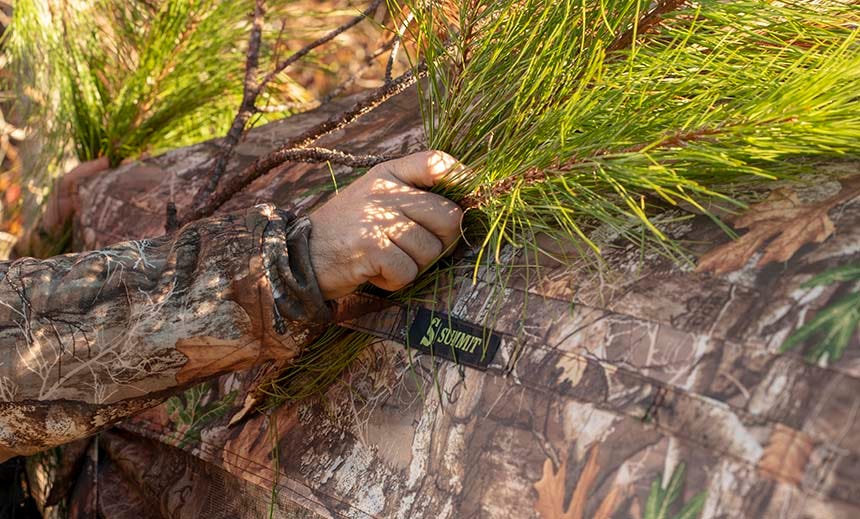
Save the Brush |
Unlike deer, turkeys don’t seem to be terribly bothered by a newly placed blind. Because of this, I don’t worry too much about brushing in a blind during turkey season. In fact, I’ll often carry the blind on my back and pop it open as needed. This is especially effective on rainy days when I’d otherwise stay in the truck or expect to get soaked to the skin.
I’ve popped up a blind in the middle of the wide-open prairie and called longbeards well within shooting range with a decoy setup. The turkeys seem to not pay any attention to the blind.
That said, when hunting public lands or areas with moderate-to-heavy hunting pressure, I will go ahead and make sure the blind is brushed and well-hidden. There’s no reason to show others where you’re hunting, and that extra concealment certainly doesn’t hurt anything as far as the turkeys are concerned.
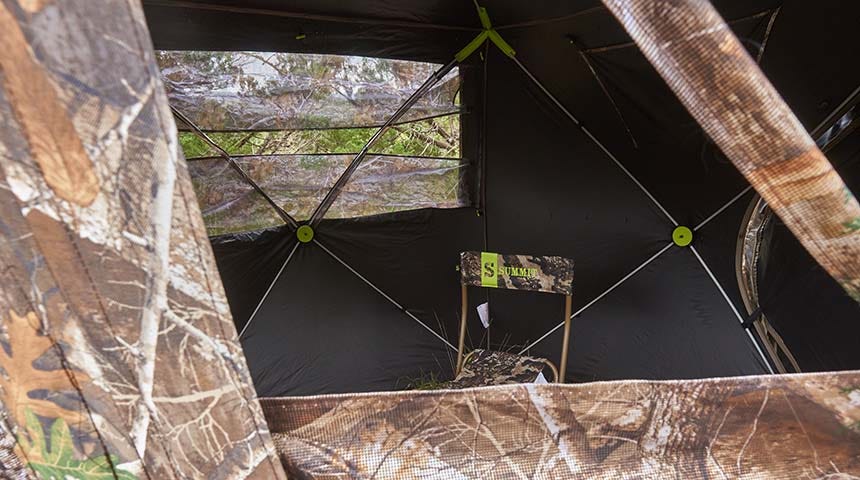
Go Dark |
While turkeys don’t seem to care much about a new blind popping up in the middle of their favorite clover patch, they do take offense to any sort of movement inside that blind. Because of this, I try very hard to place the blind in an area that provides ample back cover or, more importantly, plenty of shadow. The goal is to prevent yourself from being backlit in the blind. With the interior as dark as possible, you can get away with a lot of movement. But if light creeps into the blind from behind you, turkeys will almost certainly bust you. Simply placing your blind in a shadowed area helps tremendously. Keep as many windows closed as possible.
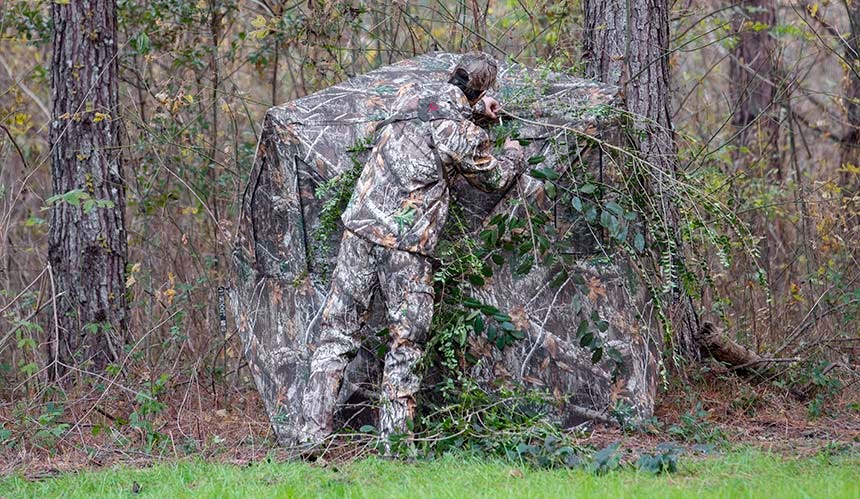
Pick Your Spots |
Again, because I hunt public land (and private land shared with other hunters), I don’t set up my blinds too far in advance of opening day. But, in some areas where access is more tightly controlled, I will place a couple blinds in key areas about two weeks before I intend to hunt. That’s usually on the edge of a large ag field that has historically served as a strut zone and gathering area for the local flock.
I do brush these blinds in, mostly because they are often visible from the road and I don’t want to tempt any unscrupulous passersby.
But, for the most part, I use my blinds as mobile devices. When I encounter an area with good, hot sign, I’ll pop up the blind and settle in for a bit as I work the calls and see what unfolds. —Tony Hansen
About the Author: Tony Hansen manages for and hunts mature whitetails in his home state of Michigan, where sweating the details is the only way to succeed. When not hunting his own properties, he can be found pursuing deer on public land throughout the whitetail’s range. Tony’s writings have appeared in Outdoor Life, Traditional Bowhunter, North American Whitetail, and Bowhunter.

